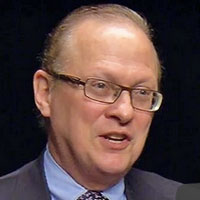Blog Post
Physician-Hospital Relationships: Integration ≠ Alignment
Burns study shows small differences in employment vs. medical staff model
Hospitals and physicians have a complex relationship. Nearly all hospitals use the traditional medical staff model, where independent, community-based physicians obtain membership and privileges to use the hospital. Many also use two other models in pursuit of physician-hospital integration: (1) employ physicians directly, and (2) ally with physicians through contracting models like physician-hospital organizations (PHOs) and independent practitioner associations (IPAs). In a new article in Health Care Management Review, Wharton professor Lawton R. Burns and colleagues Jeff Alexander and Ronald Andersen examine how these three structural models of integration affect physician alignment and engagement with the hospital.
The authors analyzed survey data from nearly 2,000 physicians across 34 hospitals in eight systems to measure alignment. Their study is the first to develop nine distinct dimensions of alignment, and to control for physician selection into different governance models to estimate the effects of governance on alignment. They also review the literature on the topic over time and find that yesterday’s discussion of “alignment” is virtually the same as today’s discussion of “engagement”.
Theory suggests that the employment and alliance models would outperform the traditional staff model. But Burns and colleagues find no differences in physician alignment between the traditional medical staff and alliance models, and only small improvements on some dimensions of alignment in the employment model. The histograms in Figure 1 tell the same story across nine dimensions of alignment.
The findings have practical implications for hospitals, given that physicians account for approximately 85% of hospital spending, and they are increasingly (and jointly) accountable for cost and quality. Hospital-level data shown in Figure 2 indicate that roughly 40% of hospitals employ physicians, an arrangement that has grown in popularity over time, in contrast to the stagnation in the percentage of hospitals integrating with physicians using a variety of alliance models. Nevertheless, physician-level data indicate that nearly 40% of physicians relate to the hospital using the traditional medical staff model, while roughly another 40% are involved in contractual alliances (not shown).
The authors conclude:
Hospitals and accountable care organizations that rely on employment may achieve higher physician alignment compared to the other two models. It is not clear that the gain in alignment is worth the cost of employment. Given the small impact of employment on alignment, it is also clear that they are not identical. Hospitals may need to go beyond structural models of integration to achieve alignment with their physicians.
